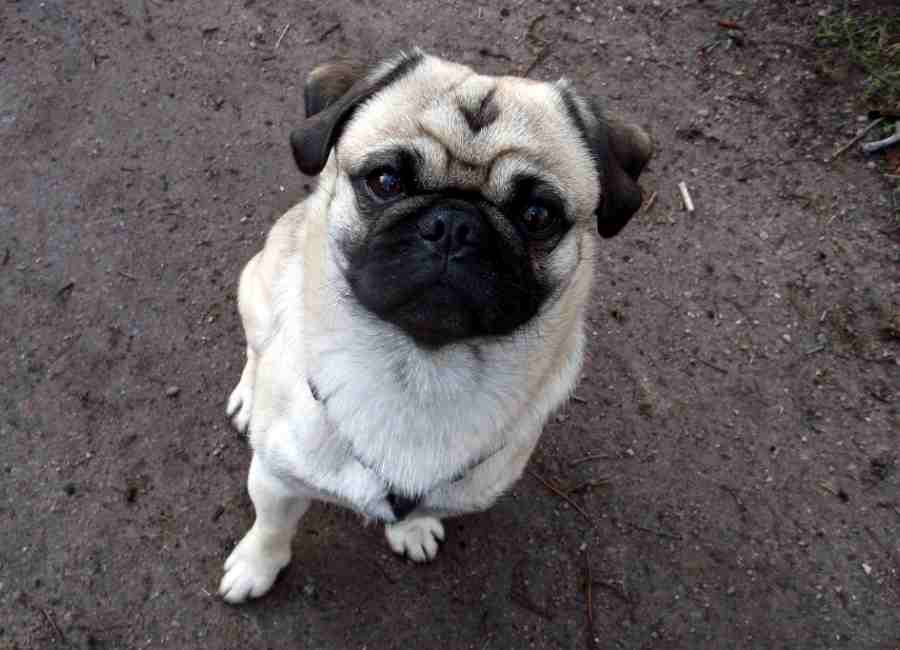17 Interesting Pug Facts You Should Know

Hey there, fellow dog lovers, let’s talk about some interesting pug facts!
Are you looking for some fun and fascinating facts about pugs? Look no further, because we’ve got you covered!
From their adorable wrinkly faces to their hilarious snorting and snuffling sounds, pugs are one of the most beloved breeds out there. But there’s more to these funny little pups than meets the eye.
Let’s get started…
Interesting Pug Facts
Here are some interesting pug facts you should know:
1. Origin and History
Pugs have a captivating history that stretches back over two millennia to ancient China. They were highly esteemed in Chinese society, especially during the Shang Dynasty around 700 BC.
Pugs were selectively bred to serve as cherished lapdogs for Chinese emperors and other nobles. Their companionship and endearing looks made them symbols of loyalty and fortune.
Pugs were even pampered with luxury and treated like royalty, residing in palaces and adorned with precious jewels!
2. Wrinkles
One of the most endearing features of pugs is their wrinkled face. These wrinkles, also known as “nose rolls” or “rosettes,” are most prominent on their forehead.
The wrinkled skin adds character and appeal to their cute, expressive faces. However, it’s important to keep these wrinkles clean and dry, as moisture can lead to skin irritations and infections.
3. Brachycephalic Breeds
Pugs, along with other breeds like Bulldogs and French Bulldogs, are considered brachycephalic. This term refers to their unique facial structure, characterized by a short, pushed-in nose and a compressed upper respiratory system.
While this adorable feature makes them look irresistibly cute, it also makes them prone to certain health issues.
Due to their short nose, pugs can have difficulty breathing, especially in hot or humid conditions, and they may be more susceptible to respiratory problems.
4. Snoring Symphony
Pugs have a tendency to snore, and it’s one of the endearing quirks that pug owners often love.
Due to their flat faces and compact airways, they may encounter some breathing issues, especially during sleep.
As they drift into dreamland, you might find yourself charmed by their symphony of snores, which can range from light purrs to full-blown melodic compositions!
5. Love for Attention
Pugs are attention-seekers, and they know exactly how to get it! They will follow their owners around the house, seeking affection and companionship.
If they feel ignored, they may resort to amusing antics to capture your attention, like tilting their head or performing silly tricks.
Their loving and devoted nature makes them excellent companions and perfect lap dogs.
6. Clownish Personalities
Pugs are natural entertainers and can turn any mundane moment into a laugh-out-loud spectacle.
Their playful and clownish behavior never fails to amuse and delight their human companions.
You’ll often find them zooming around the house, engaging in goofy antics, or striking hilarious poses that leave you with a permanent smile.
7. Sociable Companions
Pugs are highly social dogs that adore being part of the family. They get along well with children, adults, and other pets.
Their friendly and adaptable nature makes them suitable for families of all sizes and compositions.
They love being the center of attention during gatherings and social events, happily wagging their curly tails as they greet everyone with enthusiasm.
8. Famous Pugs
These lovable pups have left their pawprints in pop culture and media. They’ve appeared in numerous movies, TV shows, and commercials, often portraying cute and charming characters.
One of the most famous pugs is “Frank the Pug” from the “Men in Black” movie franchise, who steals scenes with his witty remarks and cool sunglasses.
9. Pet Therapy
Pugs’ friendly and affectionate nature makes them excellent therapy dogs. They have the ability to bring joy and comfort to people in hospitals, nursing homes, and other care facilities.
Their presence can help alleviate stress and provide emotional support to those in need.
10. Prone to Obesity
Pugs have a passion for food that can sometimes get them into trouble. Their love for treats and table scraps, combined with their lower activity levels, puts them at risk of obesity.
It’s essential to monitor their diet, control portions, and ensure they get regular exercise to maintain a healthy weight and prevent related health issues.
11. Health Challenges
Pugs’ unique physical features, while endearing, can also make them prone to certain health problems. Brachycephalic airway syndrome can lead to breathing difficulties, especially in hot or humid weather.
Additionally, pugs are susceptible to eye issues, such as corneal ulcers, and joint problems like hip dysplasia.
Responsible breeding practices and regular veterinary check-ups are essential for maintaining their health and well-being.
12. Adaptability
Despite their somewhat lazy appearance, pugs are surprisingly adaptable and make great pets for people who live in apartments or smaller homes.
They don’t require a lot of exercise and are generally happy to just lounge around and be with their human family members.
13. A group of pugs is called a grumble
When several pugs gather together, they are known as a grumble. This is due to the fact that they often make grunting and snorting sounds when they breathe and communicate with each other.
14. Multilingual Pugs
Pugs are intelligent dogs and have a knack for learning commands in multiple languages.
Whether it’s English, Spanish, French, or any other language, these quick-witted canines can surprise you with their ability to understand and respond to different cues.
This adaptability is a testament to their intelligence and eagerness to please their human companions.
15. Grooming Needs
Pugs have short, smooth coats that are relatively low-maintenance. However, their adorable wrinkles require special attention.
Regular cleaning with a damp cloth is crucial to keep these folds free from dirt and moisture, as trapped debris can lead to skin problems.
16. Human-Like Expressions
Pugs are masters of expression, using their expressive eyes and adorable facial features to convey a wide range of emotions.
They seem to understand human moods and can empathize with their owners.
When they gaze into your eyes with their soulful look, it’s hard not to believe that they truly understand and care for you.
Learn more about the pug adoption process.
17. Size and Weight
Pugs are small-sized dogs, and their compact stature makes them ideal for apartment living and urban environments.
Adult pugs typically weigh between 14 to 18 pounds (6.3 to 8.2 kg) and stand around 10 to 13 inches (25 to 33 cm) tall at the shoulder.
Learn more about the pros and cons of owning a pug.
Conclusion
In conclusion, we’ve learned that pugs are not just cute and cuddly creatures, but also intelligent and loyal companions.
From their squishy faces to their silly personalities, it’s no wonder why these pups have captured the hearts of so many people.
So, whether you’re a pug parent or just an admirer of this adorable breed, we hope you’ve enjoyed learning some fun and fascinating facts about these furry friends.
